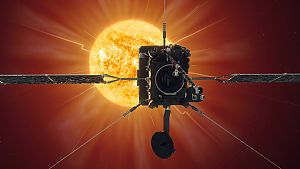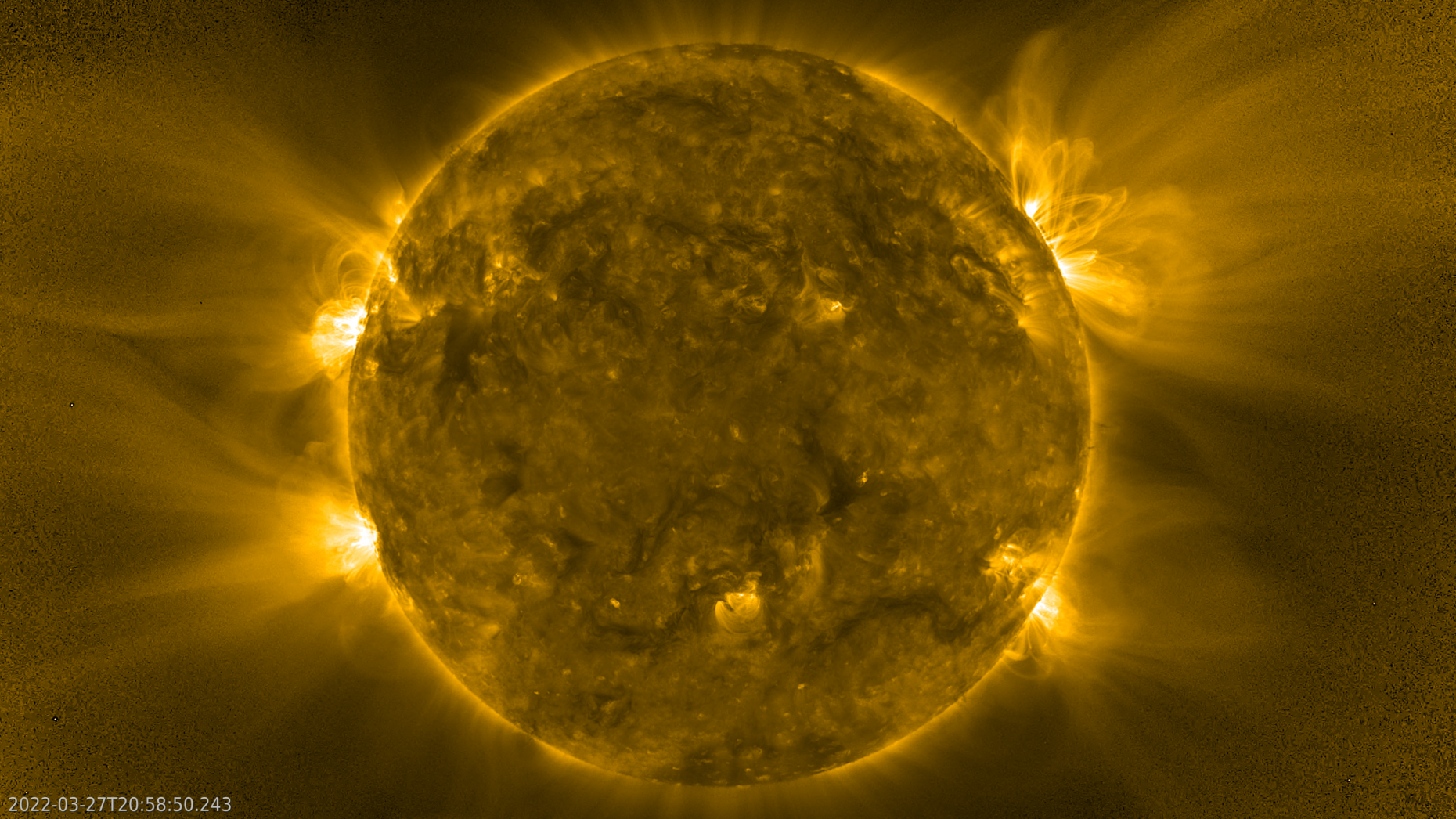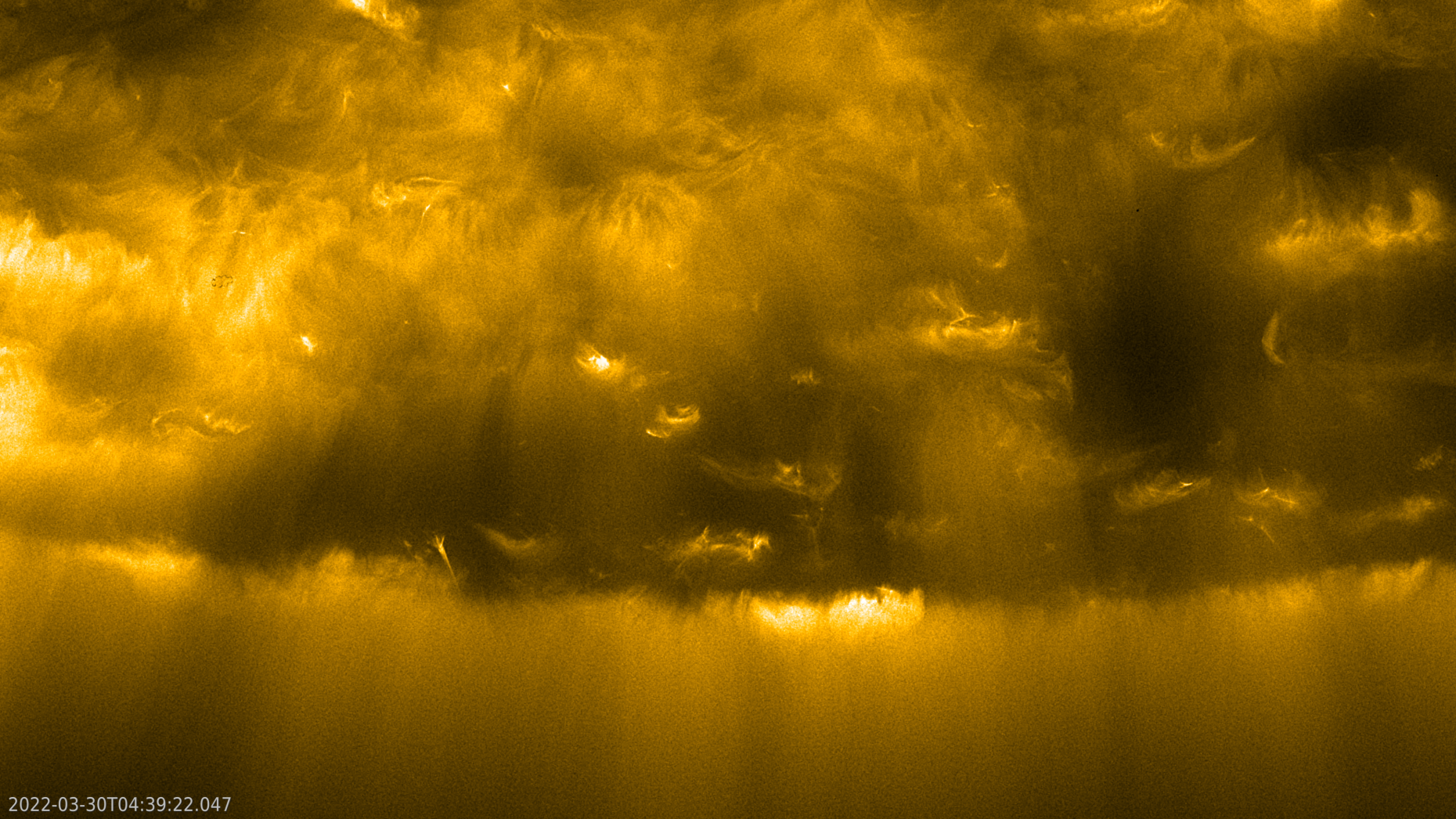Solar Orbiter space probe offers extraordinary view of the sun

The first images have now been published and show the Sun's outer, hot atmosphere, the corona, with plasma streams over one million degrees hot, as the Max Planck Institute for Solar System Research (MPS) in Göttingen announced.
On 26 March, the probe flew past the Sun at a distance of only about 48 million kilometres. This corresponds to less than a third of the distance between the Earth and the Sun and marks a preliminary high point of the mission, it said. "Only three space probes have ever come closer to the Sun - but none of them with imaging instruments looking at the Sun," the MPS writes.
Solar Orbiter uses six scientific instruments to look at the surface, atmosphere and environment of the Sun. Four other instruments measure the particles and electromagnetic fields that surround the spacecraft. The mission is led by the European Space Agency (ESA).
In the days surrounding the latest flyby, all instruments were in operation, according to the MPS, which is involved in four of Solar Orbiter's instruments as well as in analysing the data.
However, due to the current large distance between the spacecraft and Earth, the data transmission rate is currently low. So far, only a part of the recorded measurement data has reached Earth, which has been sighted by the scientific teams. More data is still expected.
Technical support and know-how from Austria
The satellite uses thermal insulation from Beyond Gravity, Austria's largest space company. The satellite will come very close to the sun. The requirements for heat protection are correspondingly high. A special shield on the sunny side protects the satellite from most of this enormous heat load by shading it. Behind this shield, Beyond Gravity's heat protection takes over the cooling of the probe. The entire satellite is wrapped in thermal insulation from Austria.
Solar Orbiter has ten scientific instruments on board, which will carry out both in-situ measurements and remote sensing . "The main goal of the mission is to learn more about the heliosphere and how our star creates and modulates this huge plasma bubble in which our solar system is embedded," explains plasma physicist Nakamura. The studies focus on the solar wind, the Sun's magnetic field and its energetic eruptions.
The IMF is involved in the radio wave instrument RPW and the magnetometer MAG. RPW will be on during the Earth flyby. "The upcoming manoeuvre offers a good opportunity to test the software updates of the last weeks," explains IWF group leader Manfred Steller, who is responsible for the RPW on-board computer. Because of its proximity to Earth, the data will also be available much more quickly.
The IWF's participation in Solar Orbiter was funded by the Federal Ministry for Climate Protection, Environment,Energy, Mobility, Innovation and Technology (BMK) from the Research Promotion Agency (FFG).


